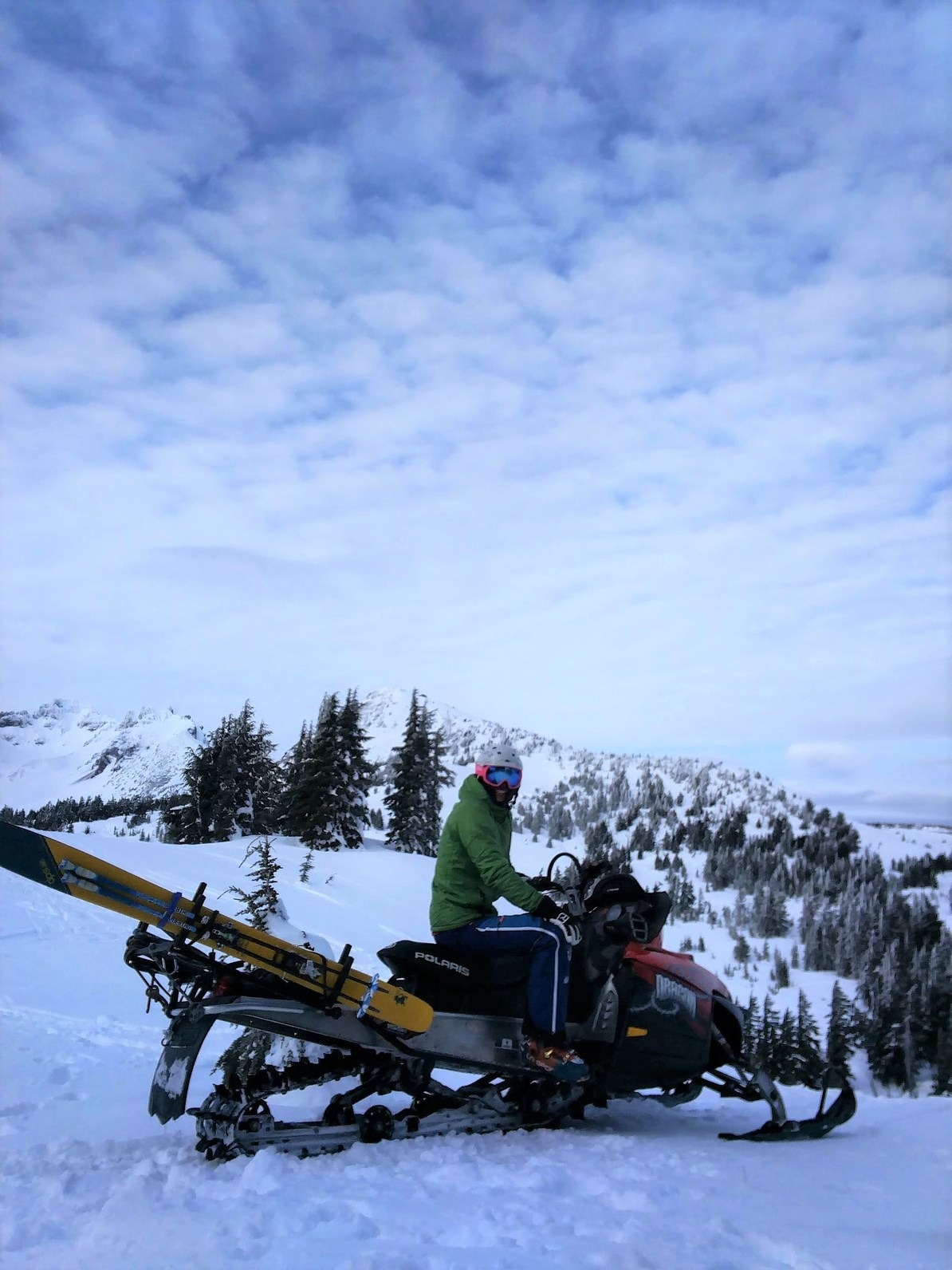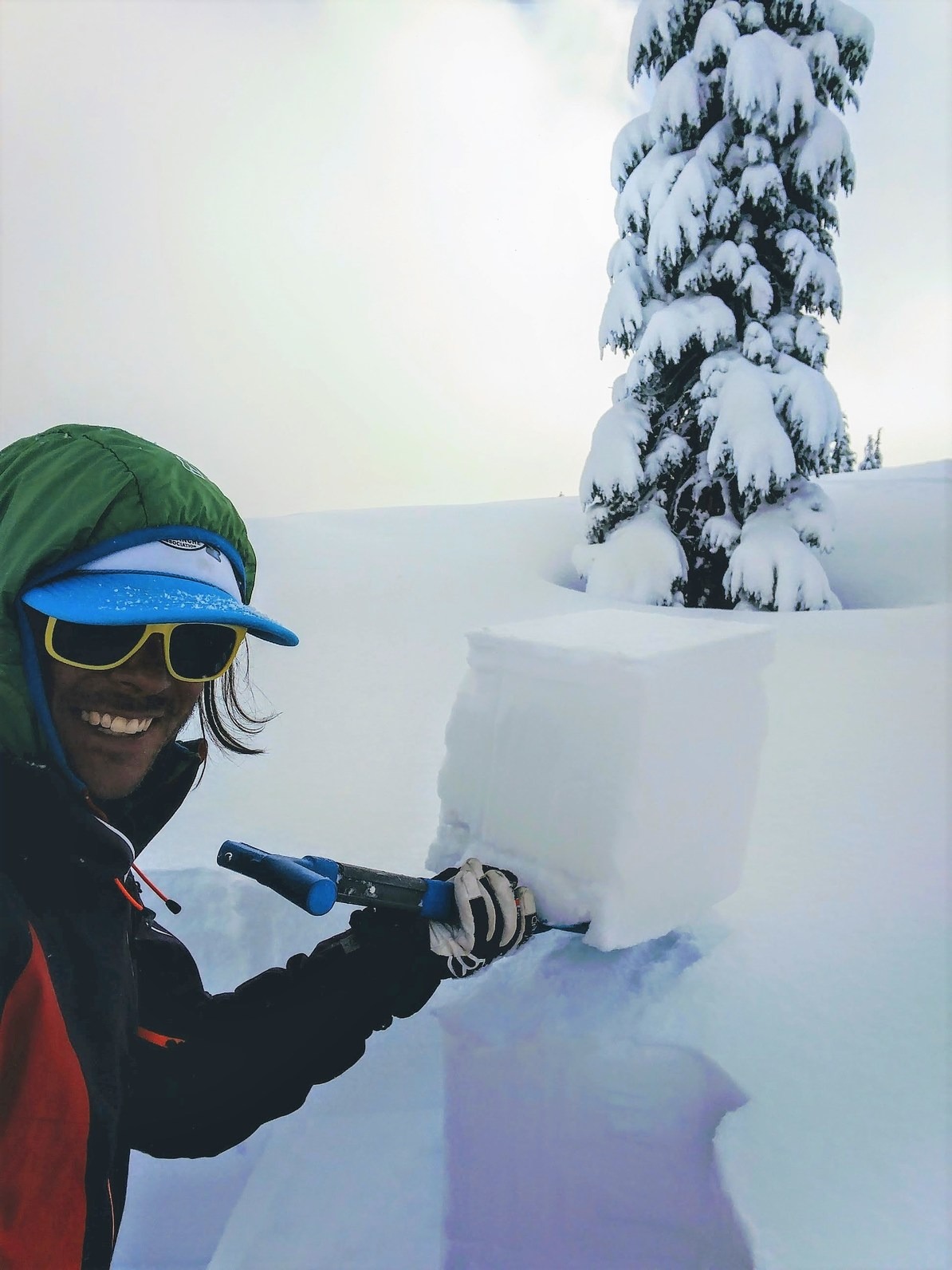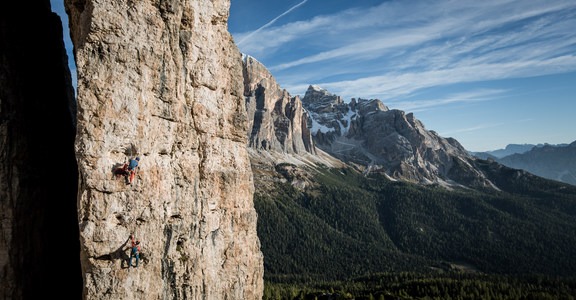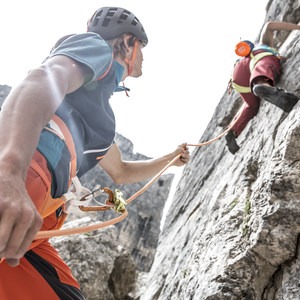This article was written by, Aaron Hartz, an avalanche forecaster for Central Oregon Avalanche Association and an ambassador for ORTOVOX. Find Aaron and follow his adventures on Instagram.
I spend a lot of time on the snow. Skiing has been a big part of my life for most of my life. My first introduction to backcountry skiing came when I was 10 or 11. I watched as a few people with leather boots and skinny skis left the ski area. They had put some weird strips of carpet on the bottom of their skis. They had long beards. At a time when all I wanted to do was ski moguls and blast off jumps, I wanted nothing to do with it.
As a teenager, I started ducking under ropes at the ski area. I thought it was something new, but later I learned this was something that people do, they ski outside of the ski area. I thought back to those people with beards and leather boots and wondered if there was something to it. It was one of those lightbulb moments, and I knew it was time to start learning. It became the start of a lifelong endeavor. I spent vast amounts of time ski touring, and I went through all of the formal avalanche education available in the U.S. I kept learning and went through a training program with the American Mountain Guides Association, and I became a certified ski guide.
Building a New Avalanche Center
I kept at it, and eventually I found myself in a unique position. I was asked to join the Central Oregon Avalanche Association (COAA). COAA’s purpose was to fill a void in avalanche information in Central Oregon. To the north, Mount Hood and the Washington Cascades are covered by the Northwest Avalanche Center, and to the south is the Mount Shasta Avalanche Center. Between is about 200 miles of the Oregon Cascade Range that historically was a black hole when it came to avalanche information. COAA started as an information sharing resource and hosted free avalanche awareness events. After a few years, COAA started moving toward the goal of creating a grass-roots avalanche center from scratch. After starting a snowpack observation team, it took a few years to make it onto the avalanche.org map, and COAA is now a Type 2 avalanche center. I am one of four snowpack observers employed by COAA, and one of the two forecasters.
Every week, the COAA observers go to a different location in the Central Oregon mountains and check out how the snowpack is stacking up and evaluate the current avalanche problems. In order to get a good picture of what the avalanche, snow, and weather conditions are like, I try to move through the terrain in the local mountains and get onto several different aspects. Aspect refers to the compass direction the slope is facing. Different aspects can have vastly different snow conditions. Some aspects are shaded, while others get direct sun. One aspect can be scoured by strong wind, while the opposite aspect can become deeply loaded by wind transported snow.
I also try to check out terrain at different elevation zones. In the avalanche world, it is common to break the mountain terrain into three distinct elevation bands: below treeline, near treeline, and above treeline. There are times when avalanche problems are widespread throughout the terrain, and there are other times when they are very specific to aspect and elevation. By moving through different terrain, I can begin to understand where and when avalanches might occur.
Sometimes the conditions dictate where I go; for example I may choose to check out cornice growth and wind slab formation near ridgetops, or I may try to move through as much terrain as possible to build a picture of the general conditions. Some tours are fairly close to trailheads, and some require a snowmobile to access more remote terrain. Currently I need to borrow a snowmobile; however, COAA is raising money to purchase a snowmobile for the observer team. Having a snowmobile will allow me to get more consistent observations from a wide variety of terrain throughout the region.

Some of the basic things I do almost every time I am in the field include measuring the total snowpack depth and the depth of new storm snow in a few different locations. I also try to get a handle on where the weak layers or weak interfaces are in the snowpack. When I am dealing with wind slab or storm slab avalanche problems, I can get a lot of good information just from poking an upside-down ski pole in the snow and feeling where the weaker layers are in the upper snowpack. I commonly perform something called a hand shear test, where I chop out a block of snow with my ski pole, and then pull on the block with my hand. The hand shear test tells me how hard or easy it is for a layer in the upper snowpack to start moving.

When I know I am dealing with a deeper weak layer or a persistent type of weak layer (buried facets or surface hoar), then I will get my shovel out and dig a formal snowpit. By digging into the snow, I can actually see and feel the weak layers in the snowpack. After this I conduct standardized tests such as the compression test or the extended column test. Aside from examining the snowpack, I also make detailed weather observations. The weather is directly tied to snow conditions and is very important in understanding the current and incoming avalanche conditions. I carry a thermometer to measure air temperature and snow temperature. I judge the wind speed and direction, cloud cover, and precipitation type and rate. I record all of this information in my field notebook. I take very detailed notes so I have a record of the day that I can use when I write my observation report that goes onto the COAA website.
The Equipment
Much of the equipment I use to make observations is part of my standard backcountry kit. My rescue probe has centimeter marks on it, so I can use that to measure snowpack depth and the thickness of individual layers. My avalanche shovel is essential for digging snowpits. I also carry a snow saw for cutting columns of snow for tests such as the compression test. In addition to this gear, I need a sturdy pack to carry it all and an avalanche rescue transceiver (aka beacon). I choose to use gear and outerwear made by Ortovox because of their long-standing commitment to making snow safety equipment.
The Weather Station
In the fall of 2016, I was tasked with building a weather station for COAA. After obtaining a permit from the Forest Service, I built the station in the epicenter of the Central Oregon backcountry. It is a few miles to the south of a mountain called Broken Top, which is largely considered the crown jewel of Central Oregon backcountry riding. Weather stations are essential for avalanche centers because they allow forecasters to gather long term and real time weather data. Since the observer team cannot be out every day, it really helps to check the weather station regularly.
The infrastructure of the COAA station consists of a 25-foot tripod that is anchored into the ground and has an enclosed control box and a suite of sensors. The station is fully autonomous and is powered by a solar panel that charges a battery. The sensors measure wind speed and direction, air temperature, relative humidity, and air pressure. A computer inside the control box records regular measurements and sends out data to a server once every hour via a cell modem. The weather station requires regular maintenance and troubleshooting and provides me with constant learning opportunities. The data is available to the public and can be accessed from the COAA website.

Once every week, another forecaster and I summarize the recent snow and weather observations and predict what types of avalanches might be encountered in our region over the following few days. As I go through the process of writing the post, I read through all of the observer team reports as well as reports coming in from the general public. I pour through the weather from the previous week, current weather, and the upcoming weather forecast. In some cases I pay attention to snowpack layers that were formed early in the season; at other times I am more concerned with how new snow is falling and where the wind is moving it. It helps to break the information down and categorize it. In reality, there are only about nine main types of avalanches that occur. If I can relate the available information to those categories of avalanches, then I can start to predict where and when certain avalanches might happen and specifically at what elevations and on which aspects they might be found.
There are times when the avalanche problems can be discerned just by keeping up with the recent snowfall and keeping tabs on the weather. For example, if I know there has been 6 inches of fresh fallen snow, and the wind has been blowing from the west, I will expect to find potential for wind slab avalanches on east facing slopes. If I know the air temperature will be increasing along with intense sunshine, then I may expect to find loose wet avalanches on sun exposed slopes. At other times I may need detailed snowpack layering information that can only come from making field observations. When people read the summary and advisory, they can get an idea of what conditions they can expect when they venture into the backcountry. This information is posted regularly to the COAA website from December through April.
Working for a startup avalanche center has been an amazing experience. The team is great, and as we move forward, COAA will continue to grow and improve. The growth will depend of funding. As of now, COAA is purely funded by donations from the community and local businesses, memberships, events, and the annual vert fest ski mountaineering race. Our goal is to be the best Type 2 avalanche center we can be. Although COAA provides the community with a quality product, we still have a lot of room for growth and improvement. It is certainly an exciting time to be a part of the Central Oregon backcountry community. In the end, it is all about helping local backcountry users to be safe and have fun!
Story by ORTOVOX ambassador, Aaron Hartz. Find Aaron and follow along on his adventures on Instagram.
Since the company was founded in 1980 in the south of Munich, ORTOVOX has stood for the highest possible protection during alpine activities. As pioneers in the avalanche safety field, we have played a key role in the development of emergency equipment for the mountains. Innovations such as the double-frequency avalanche transceiver and Smart Antenna Technology, and also targeted training measures, continue to be valuable contributions to making mountain sports a little bit safer and to saving lives.






Comments
Sign In and share them.